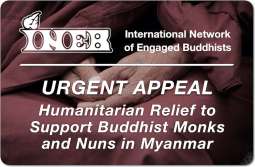rtog
[tenses]
- brtag
- rtog
- brtags
- rtags
[translation-san] {L} parīkṣā
[translation-san] kalpa
[translation-san] {C} kalpayi
[translation-san] {C} kalpayati
[translation-san] {C} parikalpati
[translation-san] {C} kalpanā
[translation-san] {para √i} : {MSA}pare
[translation-san] {MSA} paraiti
[translation-san] prekṣate
[translation-eng] {Hopkins} to examine; conceptuality; thought; conceptual consciousness; imputation; impute
[translation-eng] {C} reflection; mental consideration; construction; thought-construction; body of ritual rules; fashions; construct; imagine; imagines; construction; imagination
rtog pa
[translation-san] {MV,MSA} kalpanā
[translation-san] {LCh,MSA,C,MV} kalpa
[translation-san] {C} vikalpa
[translation-san] {C} kalpana
[translation-san] {C} avakalpanatā
[translation-san] {MV} kalpayat
[translation-san] {MV} kalpayati
[translation-san] {MSA,MV} saṃkalpa
[translation-san] {MV} jalpa
[translation-san] {LCh,MSA} parīkṣā
[translation-san] {MSA} nirīkṣaṇā
[translation-san] {MV} pratyavekṣā
[translation-san] {MSA} vitarka
[translation-san] {C} avabodha
[translation-san] {MSA} mīṃāmsā
[translation-san] {MSA} so sor rtog pa = pratyavekṣaṇa
[translation-eng] {Hopkins} conceptual consciousness; conceptuality; imputation; investigation; conceptual thought; thought
[translation-eng] {C} thinker; imagination; conceptualizer; conceptual; to examine; ideation; (false) discrimination; no-construction; consideration; reflection; construction; thought-construction; body of ritual rules; understanding; recognition; trusting confidence; consciousness
[definition-bod] mtshan nyid sgra don 'dres rung du 'dzin pa'i zhen rig
[definition-eng] Definition: a determining knower that apprehends a sound [generality] and a meaning [generality] as suitable to be mixed
[comments] Comment: This is one of the four changeable mental factors (gzhan gyur bzhi, catvāri-anyathābhāvā); for others see: gzhan gyur. In relation to analysis (dpyod pa), investigation (rtog pa) is considered to be a more coarse type of examination. In the Guhyasamāja system of Highest Yoga Tantra as presented in Nāgārjuna's Five Stages (rim pa lnga pa, pañcakrama), conceptual consciousnesses are detailed as of eighty types, divided into three classes. The first group of thirty-three is composed of conceptual consciousnesses that involve a strong movement of ""wind"" to their objects. They include conceptions such as fear, attachment, hunger, thirst, compassion, acquisitiveness, and jealousy. The second group of forty conceptions is composed of conceptual consciousnesses that involve a medium movement of ""wind"" to their objects — conceptions such as joy, amazement, generosity, desiring to kiss, heroism, non-gentleness, and crookedness. The third group of seven conceptions involve a weak movement of ""wind"" to their objects — forgetfulness, mistake as in apprehending water in a mirage, catatonia, depression, laziness, doubt, and equal desire and hatred. The three groups represent, on the ordinary level of consciousness, increasingly less dualistic perception; it is clear that in the third group the mind is strongly withdrawn. They are called ""indicative"" because, for someone who has not experienced the three subtler levels of consciousness--mind of vivid white appearance, mind of vivid red or organge increase, and mind of black near-attainment (so called because it is near to manifesting the mind of clear light), these indicate what these consciousnesses are like.
example
- [bod] dngos po la yang dag par rtog pa ni
- [eng] to conceive that things are real{MSI-396}
example
- [bod] rtog pas btags tsam gyi chos
- [eng] phenomena that are merely imputed by thought
example
- [bod] so sor rtog pa yid la byed pa
- [eng] mental contemplation of individual investigation
example
- [bod] rtog pa la gnyis snang yod pa snang ngor don spyi snang ba
- [eng] a conceptual consciousness's having dualistic appearance refers to the fact that a meaning-generality appears in the face of its appearance factor.













